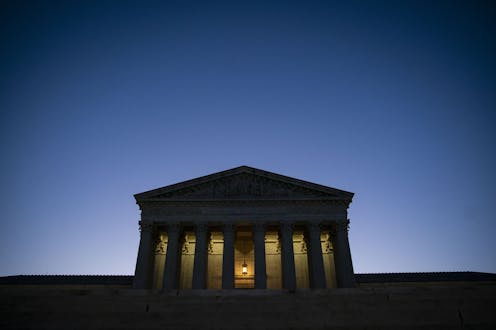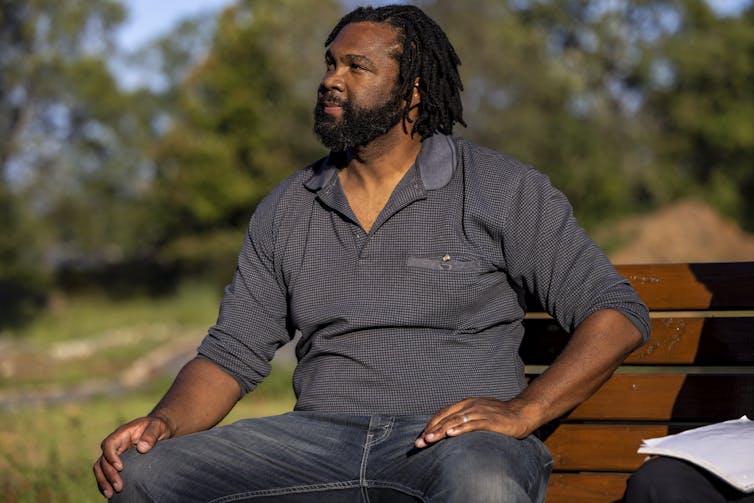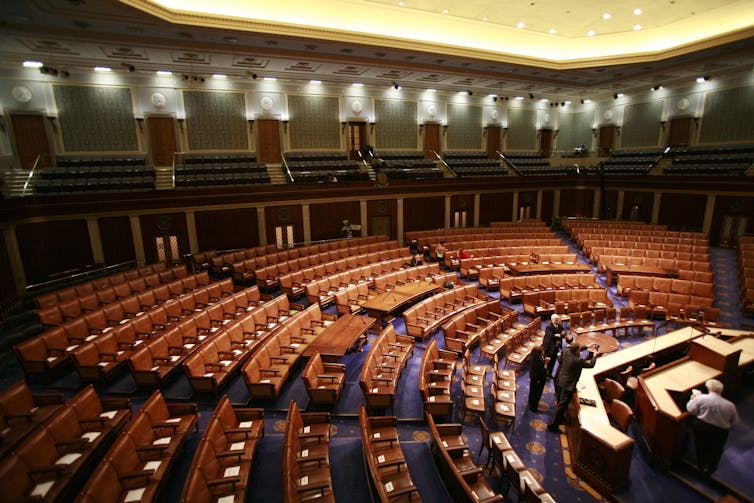Voting in unconstitutional districts: US Supreme Court upended decades of precedent in 2022 by allow
Historically, federal courts prioritized voting rights and legal congressional districts for upcoming elections above all other concerns. But the Supreme Court changed that in 2022.

For the 2022 midterm elections, the U.S. Supreme Court allowed Alabama to use congressional districts that violated the law and diluted the voting power of Black citizens.
A 5-4 vote by the Supreme Court in February 2022 let Alabama use these illegal districts during the election while the court heard the state’s appeal on the case known as Allen v. Milligan. In that case, voters had sued Alabama, arguing that its new congressional district map violated the Voting Rights Act by unfairly reducing Black voting power. Only one of seven congressional districts on Alabama’s new map had a majority Black population, despite Black residents making up a quarter of the state’s population.
The lower federal courts had agreed with the voters who sued and declared Alabama’s map illegal, ordering the state to draw a new one.
Then the Supreme Court intervened.
By June 2023, the Supreme Court ultimately ruled against Alabama. It upheld the requirements of the Voting Rights Act under these circumstances and allowed the lower court case to move forward.
But by then the votes had been cast in the 2022 elections, and the winners were seated in the U.S. House of Representatives. In November 2022, more than 1 million Americans in Alabama – as well as Louisiana and Georgia – voted in congressional districts that violated the law. Those congressional districts were used to choose political representation for Alabama citizens for the next two years.
The Supreme Court’s decision to allow presumptively illegal redistricting maps during the election not only had major effects for representation, but it also ran counter to six decades of federal court precedent.
Historically, the federal courts prioritized voting rights and legal congressional districts for upcoming elections above all other concerns, allowing lower federal courts to order or – in extreme circumstances – to draw new districts that complied with the law.
In this case, the Supreme Court instead prioritized deference to state election powers and judicial restraint over the rights and representation of voters in Alabama and the federal judiciary’s role in guaranteeing them.

New districts for 2024
Congressional redistricting and reapportionment typically takes place once a decade. Following the U.S. census, each state is required to redraw its congressional districts to account for changes in population. This is usually completed by state legislatures or redistricting commissions. After the 2020 census, Alabama’s state legislature drew its districts.
By late 2023, Alabama finally got brand-new congressional districts for the upcoming 2024 election. These new borders were imposed by the federal district court and feature a new Second District where Black voting-age residents represent a near majority. Now, Black residents in Alabama, who compose 25.4% of the state population, make up a substantial part of the electorate in two of the state’s seven congressional districts.
The 2024 primary elections have already shown the effect of this court-made map.
In 2022, the Republican candidate for the old version of the Second District ran unopposed in the primary and won the seat by 40 points in the general election. Based on newly drawn district lines, the 2024 primaries have had 17 candidates run in Democratic and Republican primaries to represent this new Second District. Both party primaries went to runoff elections in April.
This newly competitive district in Alabama not only could influence partisan control of the U.S. House of Representatives in 2025, but it also highlights the direct effect that the federal courts can have on American democracy and representation.
Just as the Supreme Court decision in 2022 limited Black voting power in the state, and thus representation in Congress, the lower court plan increased Black representation in Congress.
When courts draw the maps
The federal judiciary has played a critical role in drawing congressional maps since 1962. That’s the year of the landmark decision in Baker v. Carr, which established that the federal courts could hear cases about whether redistricting and reapportionment plans violated voting rights. Previously, these cases were seen as what were called “political questions” beyond the scope of judicial authority.
The federal courts thus became a consistent, if reluctant, part of the redistricting process each decade since then. Federal courts have imposed some congressional districts used in every redistricting cycle since the Baker decision, in 1972, 1982, 1992, 2002 and 2012. Most plans have been imposed as a result of state legislative failure to propose new districts, unequal district populations or violations of the Voting Rights Act.
Yet 2022 was the first redistricting cycle in 60 years in which the federal courts did not draw any congressional districts in response to lawsuits.
The brief 5-4 order from the Supreme Court allowing Alabama to use its districts in 2022 was accompanied by 21 pages of dissents and concurrences from the justices.
In his concurrence with the court’s order, Justice Brett Kavanaugh advocated for the “Purcell principle,” which says that courts should not change electoral rules just before an election because it could create confusion for voters and election officials.
Although the Purcell principle has been increasingly invoked over the past decade, it has not been the precedent that the federal courts have followed in redistricting cases over the past 60 years.
Instead, when the federal courts were faced with congressional plans that violated the law, they would halt the use of the challenged plan and order the state to create a new plan that complied with the law because the election was approaching.
If the state repeatedly failed to create a legal plan, the federal courts would take the uncommon step to impose plans themselves before the election.

‘Unwelcome obligation’
Election laws are traditionally the responsibilities of states and legislatures. Federal courts imposing their own redistricting plans is often referred to by judges as the “unwelcome obligation” for those courts.
Alexander Hamilton called the judicial branch of government the “least dangerous” branch because it controlled neither spending nor an army. Federal courts acting in such a political realm by imposing redistricting plans creates conflicts with the founders’ ideals of federalism, separation of powers and democracy. Since the 1960s, however, the protection of voting rights has been viewed as an issue so important that it warranted extraordinary intervention by the federal courts.
When faced with these circumstances in Alabama in 2022, the lower federal courts followed this precedent. They looked at the challengers’ complaints, found that Alabama had likely violated Section 2 of the Voting Rights Act, prevented Alabama from using its districts and ordered the state to draw new ones. But this time, the Supreme Court intervened at the behest of the state.
Once the Supreme Court’s final decision in Allen v. Milligan upheld the Voting Rights Act and the lower court’s decision, the lower court case continued, reviving that court’s order for the state to draw new districts.
After Alabama failed to submit a map that satisfied the lower court’s demands, the court used a special master – a court-appointed official – to create the new congressional districts. The aim would be to enhance Black voting power in a second congressional district to comply with the law. The new plan was adopted in October 2023.
The November 2024 congressional election results will show the true effect of Alabama’s new court-made districts. But for now, they show the clear impact that federal courts can have on democratic representation when they prioritize voting rights ahead of upcoming elections.
Sam D. Hayes does not work for, consult, own shares in or receive funding from any company or organization that would benefit from this article, and has disclosed no relevant affiliations beyond their academic appointment.
Read These Next
School shootings dropped in 2025 - but schools are still focusing too much on safety technology inst
Prevention methods like lockdown drills do not account for many scenarios, including the likely case…
From record warming to rusting rivers, 2025 Arctic Report Card shows a region transforming faster th
The 20th anniversary of the annual report tracks how sea ice, snow cover and many other vital signs…
2 superpowers, 1 playbook: Why Chinese and US bureaucrats think and act alike
The men and women tasked with implementing policy are governed by the same incentives and constraints…





